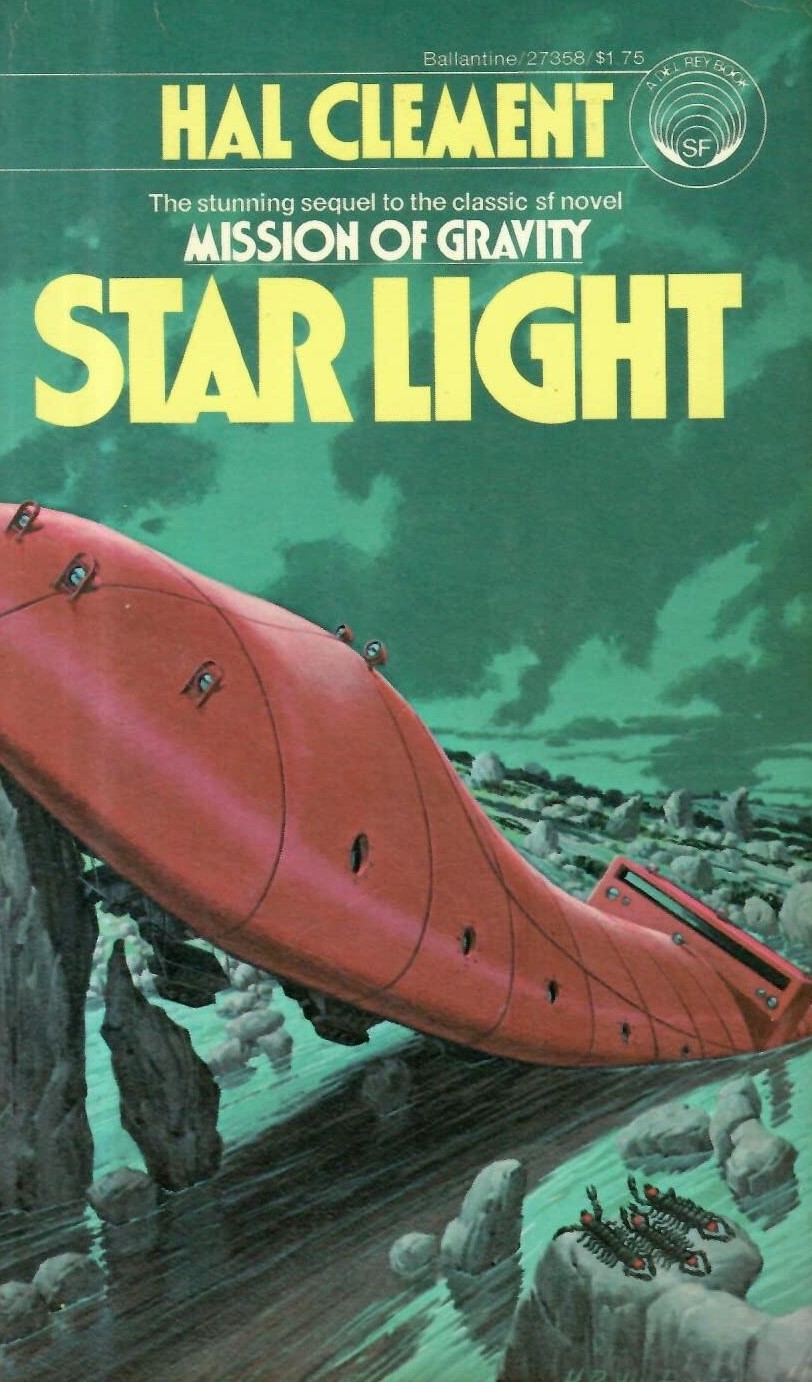Star Light

Review
Star Light is the sequel to Mission of Gravity, and continues the theme of Human–Mesklinite exploration, this time focusing on a large star-like planet.
Star Light is actually the third book in the Mesklin series, although I read it second. The second book, Close to Critical, has no direct connection to Mission of Gravity, and only links to Star Light through the character Easy Hoffman and the concept of exploring a high-gravity planet.
In Star Light, humans and Mesklinites have once again joined forces, this time to explore the planet Dhrawn. The humans remain in space while the Mesklinites travel the planet’s surface in landships called cruisers. The story centers on the cruiser Kwembly—captained by Dondragmer from Mission of Gravity—which becomes stuck on an outcropping. Both humans and Mesklinites must work together to rescue it, a task complicated by the Mesklinites’s hidden agenda.
The plot progresses slowly. The Kwembly remains stuck for most of the book (it briefly gets free only to become trapped in ice). Similar to Mission of Gravity, attempts to build tension through the conflicting motives of the Mesklinites and humans. However, this tension never really builds and is quickly resolved through dialogue in just a few pages in the last chapter.
One of ’s weaknesses in these two books is that he likes his characters too much. He wants them to be good people, and he wants good things to happen to them, so the potential backstabbing and betrayals that would add tension are always defused in a few paragraphs.
attempted to address the critique of Mission of Gravity—that his Mesklinite characters were too human—by having several digressions where he explains that Mesklinites think differently than humans do. He also added some non-human behaviors like not getting anxious or second guessing themselves. They still feel completely human.
Similarly, and just like Mission of Gravity, the world didn’t feel alien, especially when compared to the neutron star in the Cheela series. This may be partly due to ’s philosophy of science fiction, in which it is important to establish and stick to scientific rules rather than immersing the reader.1
In the end the book was fine, but slow going. With more tension and tighter editing I think it could have surpassed Mission of Gravity, but as it stands it’s slightly worse.
-
Writing a science fiction story is fun, not work. […] The fun, and the material for this article, lies in treating the whole thing as a game. I’ve been playing the game since I was a child, so the rules must be quite simple. They are; for the reader of a science-fiction story, they consist of finding as many as possible of the author’s statements or implications which conflict with the facts as science currently understands them. For the author, the rule is to make as few such slips as he possibly can.
Clement, Hal. “Whirligig World” Astounding Science Fiction. Edited by John W. Campbell, Jr. vol. 51, no. 4. Street & Smith Publications. June 1953. pp. 102–114. ↩